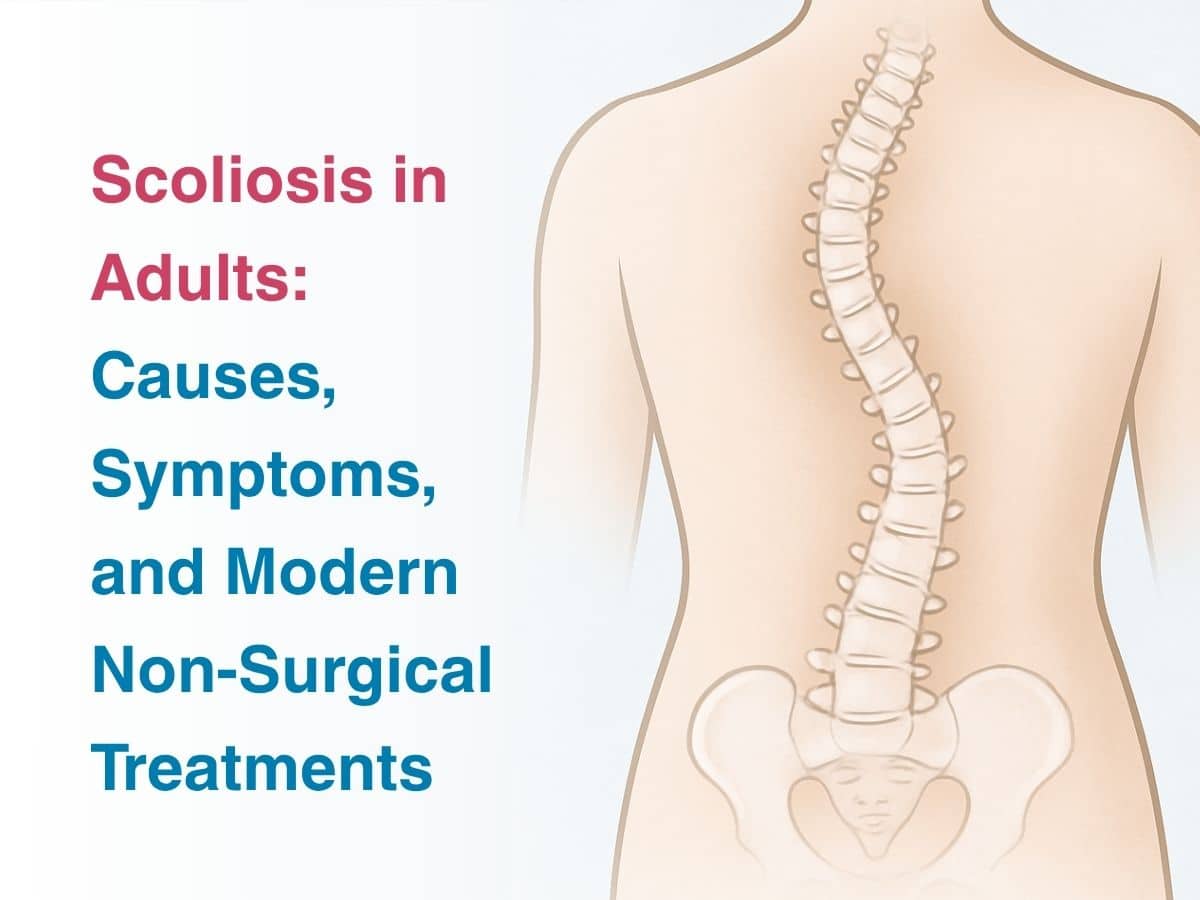
Scoliosis in Adults: Causes, Symptoms, and Modern Non-Surgical Treatments
 Scoliosis is normally a condition that is associated with young children or teenagers and is very rare in adults. But, when it does occur in an older adult, it can be challenging to deal with. Scoliosis is a condition where the normal curve of the spine – which is in the front to back orientation – is changed to an S or C-shaped side to side curve. Thankfully, most cases of scoliosis are pretty mild and don’t need any major intervention. But, for people who have adult onset degenerative scoliosis, conventional treatments may not be always useful and more aggressive approaches like surgery may instead be needed to deal with it.
Scoliosis is normally a condition that is associated with young children or teenagers and is very rare in adults. But, when it does occur in an older adult, it can be challenging to deal with. Scoliosis is a condition where the normal curve of the spine – which is in the front to back orientation – is changed to an S or C-shaped side to side curve. Thankfully, most cases of scoliosis are pretty mild and don’t need any major intervention. But, for people who have adult onset degenerative scoliosis, conventional treatments may not be always useful and more aggressive approaches like surgery may instead be needed to deal with it.
What Is Adult Scoliosis?
Adult onset scoliosis does not mean that you suddenly developed a curvy spine. You may have always had it in a much milder form but it was not detected, because it never bothered you much at all. This is because symptoms begin to show up once you get older and your body loses bone density or if you have osteoporosis.
Causes Of Scoliosis In Adults-
Many adult onset diagnosis cases cannot be attributed to a particular cause and hence will be named idiopathic scoliosis. But studies have shown that being exposed to mutagens, having cancer of the spine, or even a spinal injury can increase your risk of suffering from scoliosis later on. Even degenerative conditions that affect muscles and nerves can worsen already present scoliosis.
Symptoms Of Spinal Curvature-
Scoliosis is mostly asymptomatic in many individuals but you may notice some signs before they become more pronounced-
- If you have uneven shoulders and your head is not centred above the pelvis.
- If you have elevated hips or an uneven waist
- If you tend to lean on one side more often
- If you have uneven leg length
- If the skin over your spine changes colour or texture, then you should get it checked.
Some people may complain of more prominent signs like back pain, not being able to stand up straight, uneven shoulders, leg pain or numbness due to nerve issues, while others may seem shorter than before over time. That is a definite sign of scoliosis in most cases.
Diagnosis Of Scoliosis (X-Ray, MRI)-
A proper diagnosis of scoliosis involves your doctor doing a detailed physical examination- where they will ask you to stand straight up, without any shirt on, so they can see your back clearly. They will also ask you to touch your toes while you bend down – to look at the alignment of your spine. They may also ask you if you have issues like incontinence or motor symptoms due to pressure on nerves caused by scoliosis.
But, to be very sure, imaging will be done. You can think of an X-ray, MRI or CT scan as a confirmatory tool. Once they know how severe your condition is, they will look for treatment approaches. Scoliosis is normally diagnosed in adolescence but even later on, the doctor can use a specialised scoliometer- to check how much the angle of difference is in your spine and measure the curve.
Non-Surgical Scoliosis Treatments-
These are conventional methods of management and involve the use of pain killers, physical therapy (including Schroth therapy) to strengthen the muscles of your back and employing a brace for extra support. These are all done in an effort to help you improve your posture and reduce pain and stiffness.
Advanced Scoliosis Treatment Options-
Surgical options include the use of spinal fusion – where they will surgically fuse the bones of the spine – making it more straighter. Metal braces are used to help keep the bones in place. Osteotomy is another option which may be used at times, along with fusion to improve alignment.
Conclusion
Adult onset scoliosis is a degenerative condition which only gets worse as one ages. Most people do well with conventional methods of treatment as the curvature is mild enough and does not hamper their daily life. But, when scoliosis is severe, surgical options may be recommended. It is very important to talk to an experienced spine specialist so you get the right diagnosis and proper treatment, to ensure that your outcomes are good in the long run.






